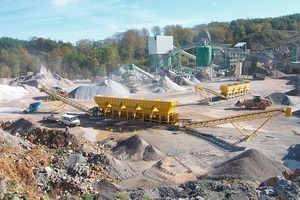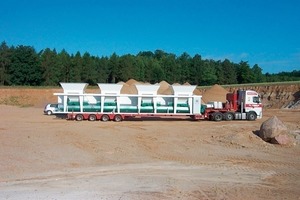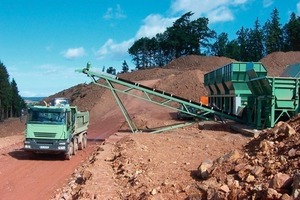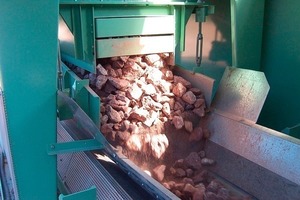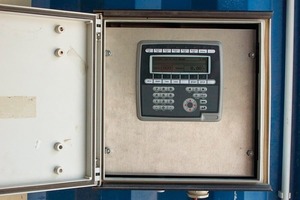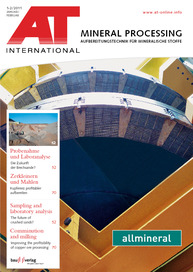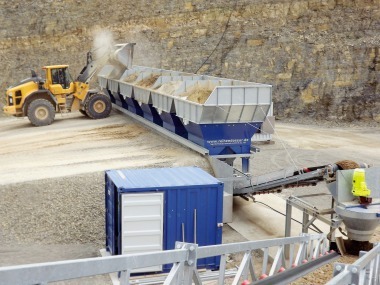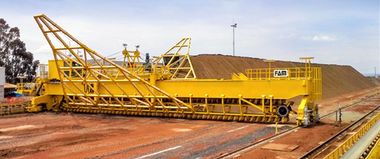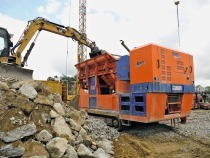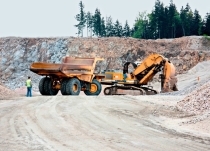Metering and blending as needed
Perfect processing, clean screening – a major order is in the offing. But the client is demanding a special unbound aggregate blend for road base courses. He cites the exacting requirements for the grading curve specified in DIN EN 13285. If the blend isn’t perfect, there could be trouble with the supervisor at the construction site.
With the help of an aggregate blender, precisely defined aggregate blends can be produced from individual grades in accordance with requirements (Fig. 1). Aware of this need at building materials or construction waste recycling companies not equipped with silos and metering belts, König Aufbereitungstechnik GmbH has developed metering and blending solutions that can produce the most unusual recipes for demanding clients in a flash. This is a real boon, always proving its worth when simple bay storage combined with traditional “wheel loader blending” is not enough to meet customer specifications. Armed with extensive experience from the initial rental of blenders, in autumn 2009 the company launched a completely redesigned blender, the RD 700, on the market. Naturally, a basic standard model is available (Fig. 2), but in addition to this, bespoke modifications and dedicated solutions on the basis of the RD 700 concept are available as options.
This development stands out against other products thanks to its large bin volume of 22.5 m³ per bin. It can handle a good 720 t/h in continuous operation. This means that a directly loaded articulated lorry can be filled in just 3 min. To ensure a continuous supply at this rate, the feed width for wheel loaders measures 4 m, so that large wheel loaders above the 7 m³ class can be used for fast loading. As the blender is designed with runners, can be hoisted into place with a single crane lift and transported on the road at any time without a special permit, its flexibility is another positive. An integrated steel wall for wheel loader ramping and the option for easy emergency emptying on the ingress of foreign matter are features revealing the manufacturer’s deep understanding of practical considerations.
As the highest precision is becoming steadily important in the sale of aggregate blends, König has equipped the RD 700 with a very rugged and easy-to-use control system with display and plain text constructed with rugged industrial components. Operators of older blenders will be pleased to know that this control system can also be retrofitted to older units. With the control system, external coarse lump bins (Fig. 3), cement screws, water metering or compulsory mixers can be activated and incorporated into the plant production. As befits such a technologically advanced product, besides the traditional “production for stockpiling”, the truck driver can enter the type and quantity of aggregate he needs, which, as well as bringing variety to the sales products, “takes the load off” the wheel loader in peak times and enables unmanned loading with the help of a chip card. If there are special requirements for operation of the RD 700, with the clever configuration of the blender, a special hopper for a magnetic feeder (Fig. 4) or a screw hopper for metering powdery or adhesive materials, for example, can also be integrated.
One gravel works operator sums up that his blender had paid for itself after 18 months and he regrets that he did not decide to buy one earlier. As most users have similar experience with their blender, the focus at König has steadily shifted from the rental business to the production and sale of aggregate blenders (Fig. 5) for unbound blends and hydraulically bonded base layers, as experience has shown that once a client gets to use a blender, he never wants to give it back again anyway. Besides the production of aggregates in line with customer requirements, the blender has an additional advantage in that the most expensive component can be kept at the lowest limit and a surplus component at the top limit, while the operator remains within the bounds of the given tolerances for a reliable product. In addition, the RD 700 concept has been designed to permit the easy modernization of long-serving units. The standard blender with metering belt is used as an integrated unit for upgrading older installations. Several months ago, a GDR blender (built in 1980) was upgraded at a Brandenburg-based company and updated to the state of the art with a modern control system.
König Aufbereitungstechnik GmbH, Berlin (D),
Tel.: +49 30 437789220, www.reihendoseur.de

